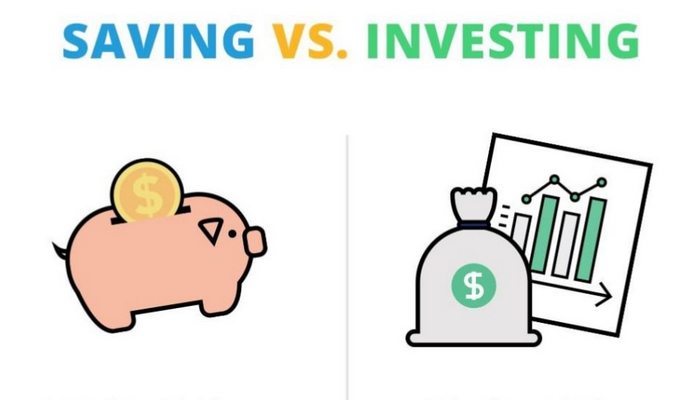Saving vs. Investing: What’s the Difference and When Should You Do Each?
Have you ever wondered if you’re really making the most of your money? Many people think saving a little every month is enough to stay financially secure. Others dive headfirst into investing without building an emergency fund first. But do you truly know when you should save and when it’s time to invest? This is a more common question than you might think — and understanding the difference can completely change your financial mindset.
Advertisements
Understanding this difference is one of the most important steps toward achieving financial peace of mind. Saving and investing are not the same—each serves a different purpose, comes with different risks, and fits into different moments of your financial journey. Knowing how to balance both can be the key to building real financial freedom. With the right knowledge, you stop reacting and start planning smart.
Advertisements
In this article, we’ll break down in a simple and practical way what it means to save and invest, the benefits and risks of each, and how you can apply these strategies in your own financial life—even if you’re just starting out. Keep reading to learn how to make smarter decisions with your money.
By the end, you’ll feel more confident, informed, and ready to take control of your financial future.
Save or Invest: What’s the difference and when to do each?
Do you really know the difference between saving money and investing? Although both terms are very common in the world of personal finance, they have completely different purposes — and understanding this can transform your relationship with money.
Advertisements

In this comprehensive article, we will show you:
- What it means to save and invest
- What are the main differences between these practices
- When to use each one
- How to get started in a practical way, even with little money
We will simplify the subject so that you can make smarter financial decisions, with security and clarity.
What does it mean to save money and why is it so important?
Saving money is the first step to building a stable financial life. It’s when you set aside part of your income to keep it in a safe, accessible and low-risk place.
Normally, this amount is in:
- Savings account
- Digital account with automatic income (such as Nubank, C6 Bank, etc.)
- Treasury Direct Selic account (yields more and is super safe)
Why is saving essential?
Saving is crucial to deal with unforeseen events, achieve short-term goals and avoid debt. Imagine a medical emergency, a car repair or even an unmissable promotion. If you don’t have a set amount set aside, you may end up resorting to your credit card — and then the problem snowballs.
In addition, saving allows you to have peace of mind. Knowing that you have a reserve for emergencies or concrete plans, such as a trip or a new course, gives you more freedom and less stress.
What does investing mean and how can it multiply your money?
Investing is when you put your money to work for you. Instead of leaving it “idle”, you invest this amount in financial assets that have the potential to appreciate, such as:
- Company shares
- Real estate funds
- Direct Treasury (prefixed, IPCA)
- Index funds (ETFs)
- Cryptocurrencies (with care and study)
What is the objective of investing?
The main objective of investing is long-term wealth growth. It is a way to protect your money against inflation and achieve bigger goals, such as retirement, buying a property or financial freedom.
Unlike saving, investing involves risk, but it also offers much higher returns over time. For example, while savings accounts yield around 0.5% per month, an index fund can yield 8% to 12% per year, depending on the economic scenario.
Saving vs Investing: A clear and direct comparison
To make things easier, see a table with the main differences between these two practices:
| Feature | Save | Invest |
|---|---|---|
| Objective | Short term, emergency | Wealth growth |
| Risk | Very low | Moderate to high |
| Expected return | Low (up to 2% per year) | High (up to 12% per year or more) |
| Liquidity | High (immediate redemption) | Medium or low (redemption may take days) |
| Time horizon | Months or up to 2 years | 5 years or older |
When is saving the best choice?
Saving is the best option when you need liquidity, that is, quick access to your money. This is essential in times such as:
- Building your emergency fund (minimum 3 to 6 months of fixed expenses)
- Purchasing goods in the short term (e.g. cell phone, notebook, appliances)
- Paying off debts
- Unexpected medical expenses
- When saving money brings more security
If you are still at the beginning of your financial journey or have job instability, saving before investing is essential. The ideal is to ensure that you can deal with unforeseen events without having to sell investments at a loss.
When is investing the smartest choice?
Investing makes more sense when:
- You already have an emergency fund
- You have medium and long-term financial goals
- You are willing to take some risk in exchange for a higher return
Ideal investments for beginners
If you are just starting out, some safer options include:
- Tesouro Direto IPCA or Selic
- Index funds (such as BOVA11 or IVVB11)
- Low-risk multimarket funds
- Bank CDBs with FGC protection
And the best part? You can start with R$100 or less. The important thing is to create the habit.
Save for now, invest for the future
Saving protects you in the present. Investing builds your future. Both are essential. Don’t choose one. Use both to your advantage.
Start with what you have. Even if it seems like little, time and consistency transform small amounts into big financial achievements.





